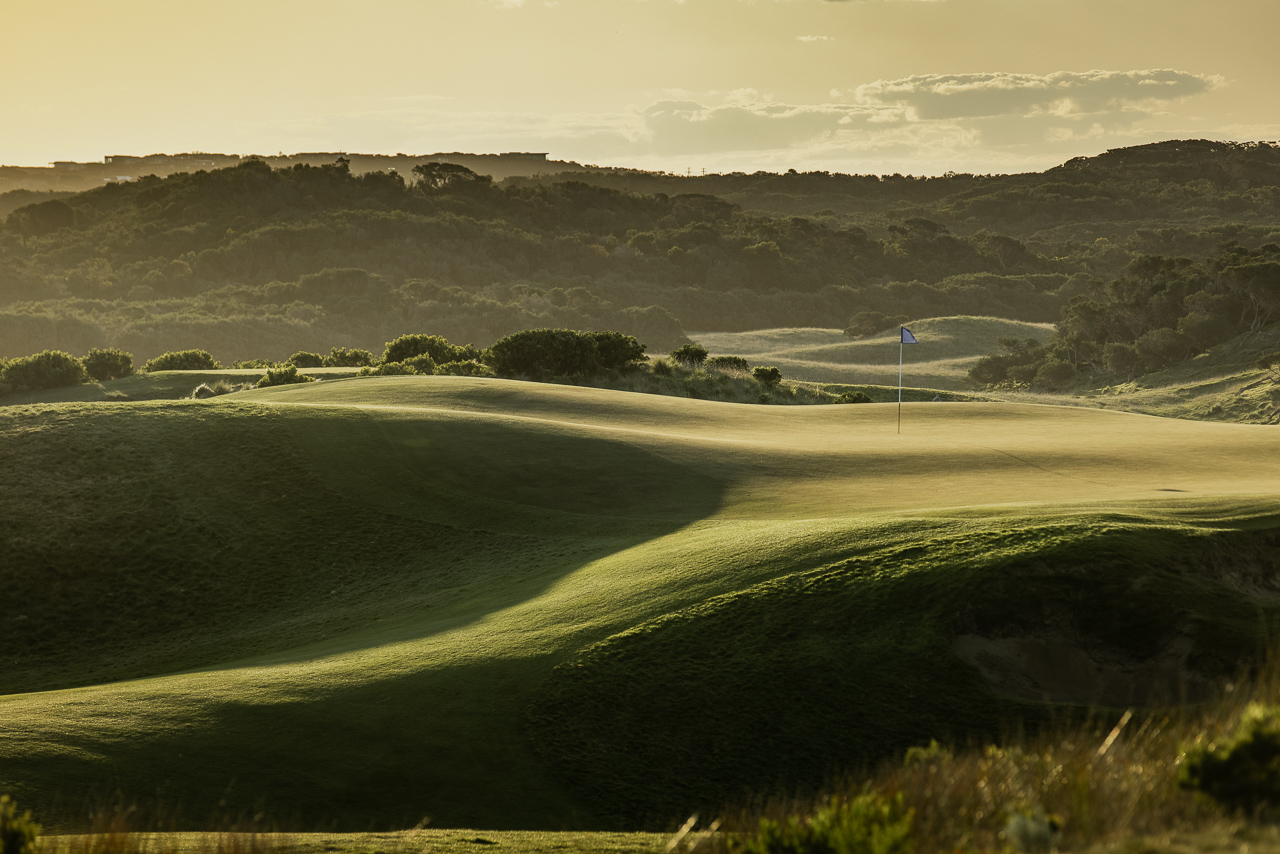CONTOURS PRESENTS
Interview - Bob Harrison
Featuring responses from Bob Harrison. Photographed, filmed & edited by William Watt.
Contours: Can you give us a little bit of a background of how you became involved in golf course design?
Bob Harrison: Well, I went to uni to do physics, and I was okay at advanced maths, but not quite good enough. So I switched to engineering and partway through, convinced the engineering professors to let me do a final year thesis on a golf course project – they agreed to that if I could find somebody in business who was actually planning to do one. I hunted around and found that Lend Lease at Campbelltown were planning their Glen Alpine Estate. They had to move the existing Campbelltown Golf Club as part of that project, and they were doing the design and I became the sort of project manager after I graduated. A year into that project they fired the American firm they had been working with on the design and took a chance with me. So I got a chance at an 18-hole course almost straight away.
That project went for six years and then I spent about three or four years with Civil & Civic on high-rise buildings and shopping centres before getting back into golf course design by myself. During that time, I found myself in Tamworth at the Tamworth Country Centre, and part of that total development was the Longyard Golf Course. We got nine holes into that and figured we needed some marketing – it seemed to me that we better get some sort of big name golfer attached. The first person we approached was Seve, so I had a couple of meetings with Seve [Ballesteros] and his manager, a fellow from Melbourne, but eventually that fell over and then we approached IMG about getting Greg Norman involved.
This was round about the time that IMG, his managers, were trying to persuade the Norman family that it was a good idea to be in golf course design. Norman’s team were somewhat concerned that it might distract from his golf, so they had initially resisted.
But before too long they revisited the idea and started to put together a team. They needed somebody to do the design and I guess they thought ‘it might as well be that fellow that brought in the Longyard course’. That’s really how the relationship with Norman started. He was in his thirties and was world number one, so he was obviously playing golf most of the time and was living in America – and I was in Australia. In any company you could argue it’s not a great idea to be in one of the outposts, but in this case it suited both parties because I had a pretty free run at things and Norman could remain primarily focussed on his golf.
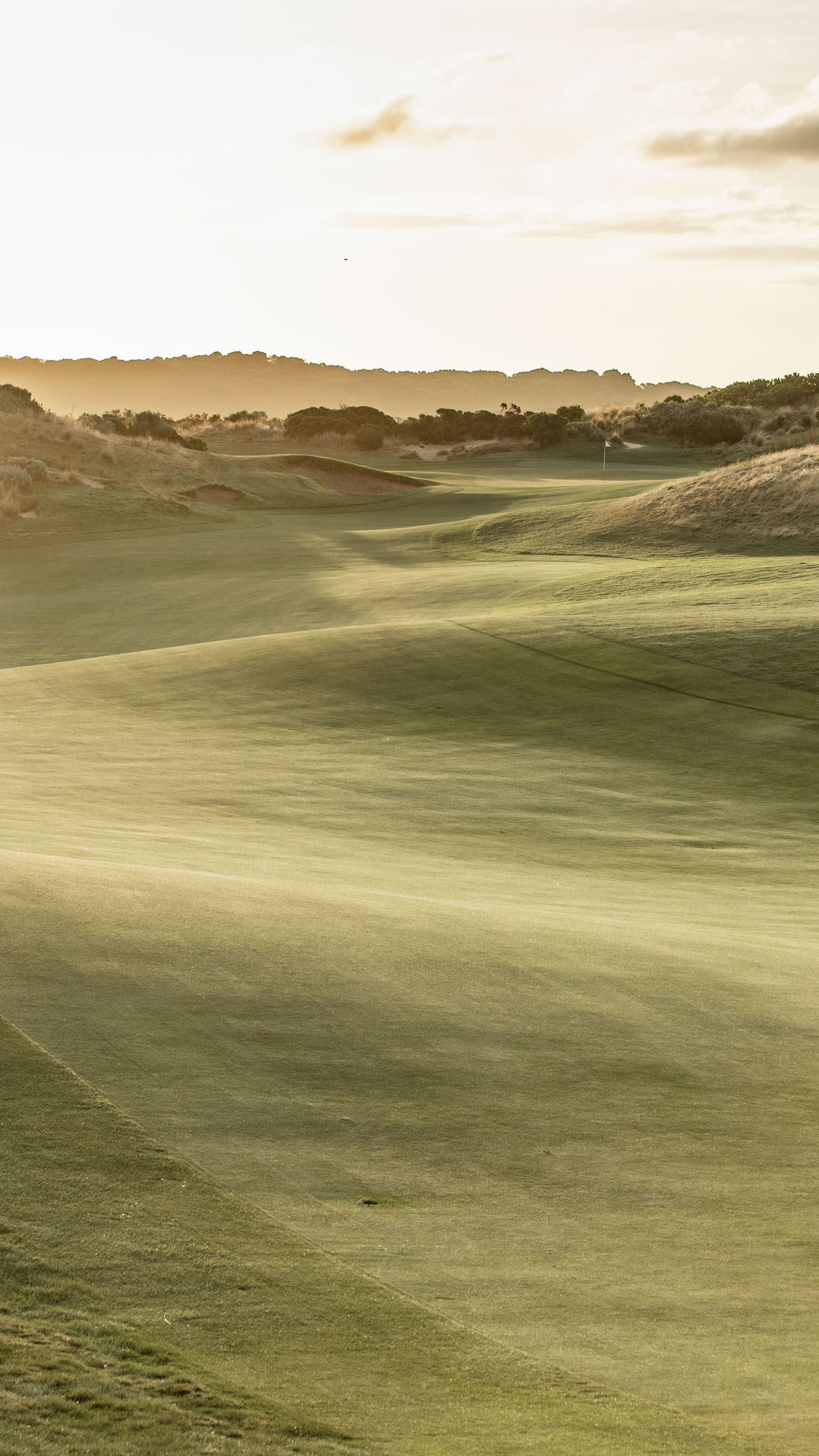
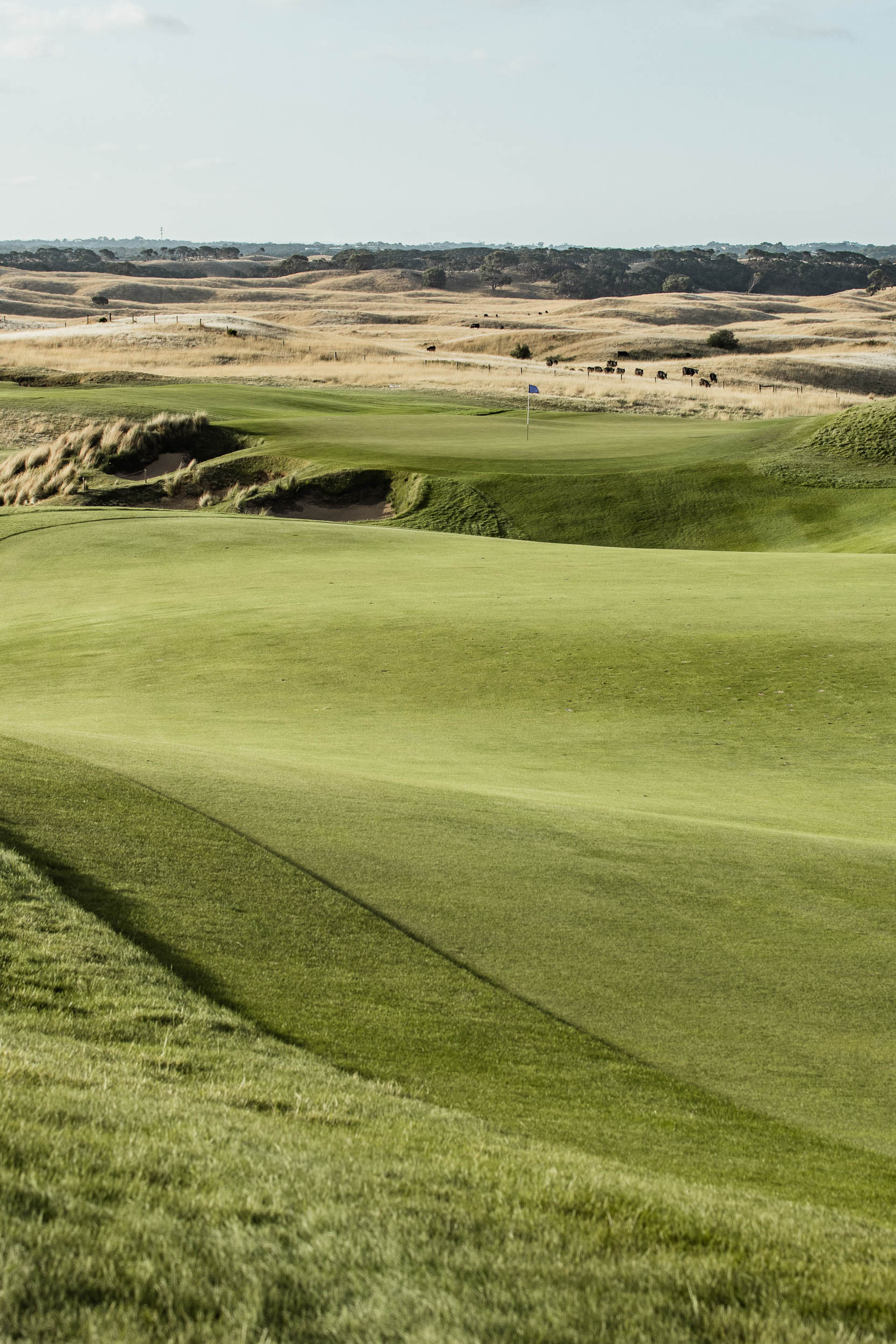
C: How did you first hear about the site at The National and then more specifically the Moonah course project?
BH: We got approached by the club. They’d been talking to Thomson/Wolveridge for quite some time, and they’d done some planning work with them to test the prospect of the project being approved. The club had the view that they needed the Norman name for marketing, and Thomson/Wolveridge to ensure a good golf course. We recently had a bit of a laugh about it, in that perhaps it turned out a little differently than expected at that time!
Anyway, I’d been working with Norman for about 10 years at the time. A lot of that early work was in Asia which was booming. Japan was jumping. I remember there was a project we were working on in a place just outside of Osaka, and a nearby Nicklaus course cost US$270 million to construct, which is obscene and probably unnecessary. But then the memberships had sold for $300,000 each, and had sold out in short time too. So the numbers were huge in those days.
We were active all over the place – Indonesia, China, Thailand, most of the Asian countries. Back here in Australia we were busy too – four courses in Queensland, two in New South Wales, plus The National and Sanctuary Lakes in Melbourne. So I think there were a total of 12 projects underway in Australia during that period.
It was around this time that we entered a joint venture with Macquarie Bank to form a company called The Medallist, with the idea of doing golf and real estate projects, and quite a few of those projects came under that banner. The National fell into that category in a sort of a way – Medallist did the development of the lots that are currently along the 16th and 17th holes. There was a plan to continue next door, to the land North of the Moonah course, and do two more courses and a bit of development as well, but it never got off the ground.
C: What was distinctive about working on The National?
BH: The process at the Moonah was brand new for me because I’d never actually worked in sand before. It was clearly a great opportunity and great ground to work with. This brings an obligation to squeeze the best out of it – there’s a bit of pressure that comes with a project like that, particularly if you haven’t done it before. But I didn’t mind the pressure and overall it was a very enjoyable project.
I look at it now as one of the best courses in all the years I was with the Norman Group. There are three projects that stand out and the Moonah is one of them. The other two are in very different ground – Ellerston for Kerry Packer, which is in rolling mountainous clay country, just east of Scone. And the third one is the Nirwana Bali course, which is on the ocean, and unfortunately has just been ripped up by Trump’s group and Phil Mickelson.
But yes, you get a bit of land like that and you don’t want to leave anything untried. There were lots and lots and lots of iterations of sequences of holes, trying to squeeze the best out of it, which I hope I did.
”You get a bit of land like that and you don't want to leave anything untried. There were lots and lots and lots of iterations of sequences of holes, trying to squeeze the best out of it, which I hope I did.
Bob HarrisonGolf Course Architect


C: Can you walk us through the process of the routing for the Moonah course?
BH: The routing was, to start with at least, being done in parallel with Peter Thomson’s Ocean Course. This was complicated by the fact that the clubhouse is in one corner of the property that we were working with. Initially, the brief was that the two courses had to get back to that one location after each nine, and also have the practice area in between them. It was all too tight. It was around about that time that the two fellows I dealt most with on the Moonah, Michael Hamson and Richard Launder (then the president and vice president respectively), found what is currently the practice area, which solved one of the problems.
But on the Moonah course, even with more land available, there was one section of it that really appealed to me and that was out in the far corner where 10, 11, and 12 are today. So I was desperately trying to get to that area, and it was actually a bit of a contest between us and Thomson’s crew as to who got what. I remember at one point Peter Thomson wanted what is currently at the Moonah second hole, but we won that argument. By doing these things in parallel, they ended up with a course that more or less returned after nine, but we didn’t – ours was an out-and-back. So that was partly to accommodate the fact that it was a very tight squeeze where the clubhouse is, but also because I was trying to get out to 10, 11, and 12. That meant it had to be an out and back. But I think that’s okay – one course that returned and another one that didn’t, that was fine in terms of the member experience.
Video piece – Sunset on Moonah
C: How often were you on site for the build?
BH: I’m guessing 30 to 50 times. Some projects you get are more oriented towards drawing versus on-site work, and others not.
If you get a dead flat site, for example a project I worked on called The Glades up on the Gold Coast, you’re able to do a lot of the work through drawings. That site was absolutely dead flat – the only features it had were about five or six beautiful big trees that had to be knocked down because they were camphor laurel [a highly invasive evergreen tree]. So we started with nothing at all really. In that case, we were able to draw half metre contours over the entire site to predict what the shape of the golf course would be, and we followed that design right through to what was built in the ground. So there’s one extreme – you’ve still got to get on the site to finesse the shapes, but you’ve drawn the thing to at least half metre accuracy, and the greens even more accurately than that.
The National was not in that category at all. The closer you get to being in the sand dunes, the more likely it is that the routing is largely an evolving sketch. It’s a combination of drawing and getting on the site, checking things, seeing what’s good, seeing if there’s anything better, getting back to the drawing and iterating and so on. So you do end up with a drawn routing, but we did not draw the shaping in any great detail – that was all done on the ground. So I was there a lot, and I’m there on every project pretty frequently.
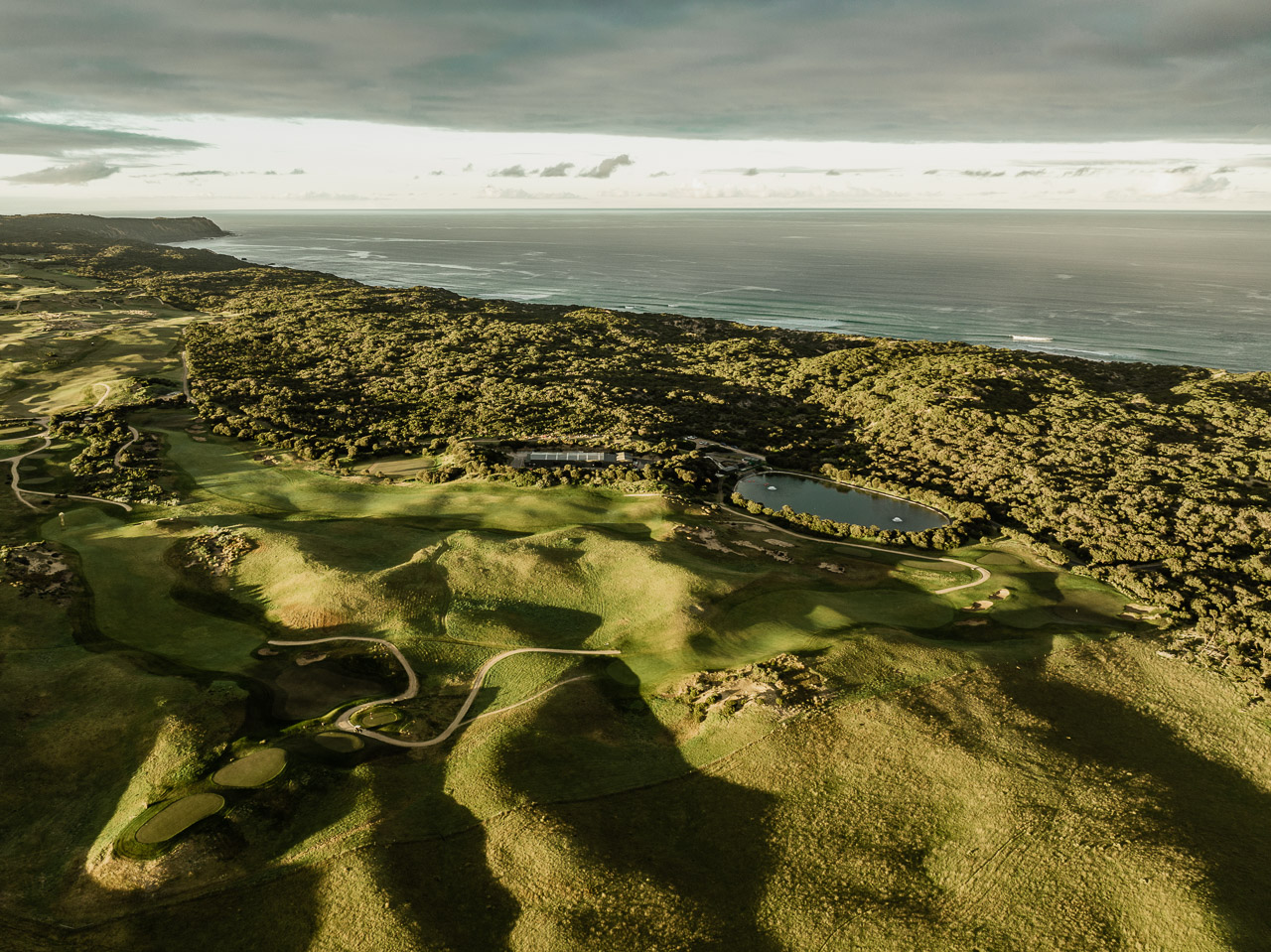


C: How would you describe your design style?
BH: The aim is to get the best out of whatever’s on offer. If you’re in a parkland environment, like Augusta National for example, that’s one thing. And then if you’re in dunesland like The National, that’s requires a different approach. To adapt your style to what’s in front of you is important. In the case of The National, the land is already fantastic – dunes land that’s been slightly evened out by being grassed and grazed. So it’s more rolling than pure dunes might be, but still has peaks and hollows and ridges, so you’ve just got to take the best advantage of that and not do something too formal. If you tried to build something with pure-white bunkers and everything lush green, that’d just be out of place. It just seemed that a rugged and wild look, particularly with the bunkering, was appropriate on Moonah. That’s something that I hadn’t done previously, but had to be done there.
I spoke extensively to Bruce Grant who was the superintendent on The Old Course to try to find out what had gone well and what problems had arisen. The two comments that he had that I took on board were that, firstly, the bunkers on The Old were too big for such a windy environment, and that it would be better not to make them as big as that. That’s the reason that the Moonah bunkers are adapted to the size they are. Some of them still blow out a bit depending on which direction they face and how much exposure they’ve got, but by and large, they hold shape reasonably well and they look good.
The other comment that Bruce made was also interesting – that on land that rolls as much as The Old Course does it probably wasn’t a good idea to have Santa Ana grass on the fairways. Santa Ana is very nice grass, but it’s quite fine and produces a bouncy surface. We didn’t want to end up with fairways where the ball ran for 200 yards. So that meant not choosing Santa Ana, and we opted for what is currently on the Moonah, which is a mixture of couch grass that isn’t quite as fast as Santa Ana – but isn’t as slow as the Legends that was chosen for the ocean course – and Fescue.
The other choice we had, of course, was on greens too. I didn’t want to have a grass that was too pristine, and that was the reason for choosing SR 1019. It has a slightly mottled look as opposed to being totally uniform, and has a subtle colour, which suited the surrounding environment. It’s produced good surfaces over the years too.
C: So do aesthetics come into your decision making with turf choices?
BH: Oh, absolutely. Number one is playability – what is likely to be sensible, and that was the primary factor in the choice of the fairway grass. But on the greens, we wanted something that wasn’t too bright green and not too uniform in appearance, because that seemed to fit the wildness of the landscape. For the outer roughs – they started life having been cattle farm and they’re all pasture grasses, as opposed to the sort of natural landscape you might get on between the course and the dunes. It looks great when you get that contrast when they go hay-like. But it would’ve been interesting had they not been grazed originally, and had the natural ground covers still been there.
C: Are there any particular holes or features of the Moonah course that you think back on and are particularly proud of today?
BH: I mean I like most of them! So to pick favourites… It’s funny, you start off believing prior to construction that some holes are your favourites and they’ll be the best. Sometimes that works out and sometimes it changes. One hole that is always going to be a standout is the 7th – the shape of that land always appealed to be a natural par-5, and I love how that worked out. I was knocked out by the land where the second half of 11 now sits as well. Even though it’s a little bit unusual, coming off the hollow down onto the flat, then up over the ridge and down onto the green, it was a design I just had to try. Actually that area is probably my favourite part of the course. Not so much the tee shot, which is a difficult looking thing and a difficult shot too. But the second half of that hole I think was my favourite.
I also always liked the idea of the 10th. To start with, I had to fight to keep the windmill, but eventually people thought that was good. The 10th green is in a sort of a bowl, and if you look at links courses in Britain that’s quite often the case – you get some very interesting greens that are in bowls. It’s something you can only do on dune land because if you’re not on sand you run into drainage issues with that sort of design.
I also like the opening hole – you get on that first tee and the look out to the course is just terrific. It just gives you a really strong impression of what this place is all about. Then you hit across the left-hand side and it opens out to a 80-yard wide fairway – that’s great. And three and four too – I like that stretch of holes.
It’s funny, we were talking about alternatives and exploring all possibilities for the routing. You can overcook it – you can go too far. I remember that I was working out the layout before Greg Norman came back for his site visit, when the centrelines were all staked. And I’d started off thinking that the current six hole was one of the best on the course. But by the time it came time for review, I’d convinced myself that it wasn’t even in the 18 and took it out. We eventually reinstated it fortunately. You need to spend time looking at alternatives, but there comes a point when you’ve got to believe in your gut.
”I'd started off thinking that the current six hole was one of the best on the course. But by the time it came time for review, I'd convinced myself that it wasn't even in the 18 and took it out. We eventually reinstated it fortunately. You need to spend time looking at alternatives, but there comes a point when you've got to believe in your gut.
Bob HarrisonGolf Course Architect
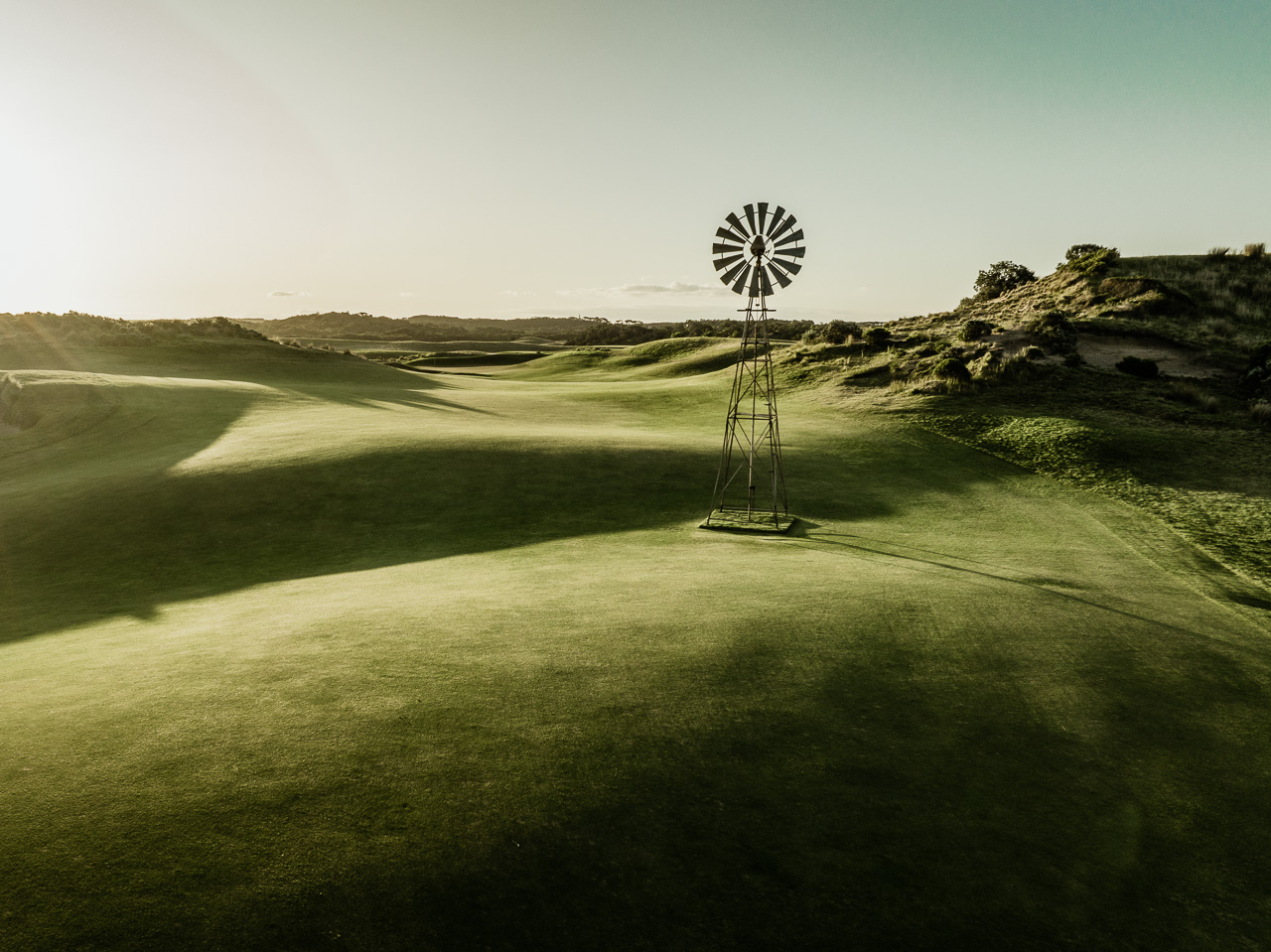
C: How do you compare the golf offering in Melbourne and Mornington Peninsula to other global golf destinations that you’ve visited?
BH: Very highly. Both the Mornington Peninsula and the Sandbelt, and particularly The National. To have those three courses in lovely land, with The Dunes just down the road too, that’s pretty special. It stacks up against anything as a collection.
You’re talking to somebody who’d much prefer the sort of look that all of these Victorian courses we’re talking about compared with, say, going to a big American resort where it’s all rose gardens. I will say though, that does fit at a place like Augusta National, just while it is top of mind. Augusta gets criticised quite a bit by purists for being too pretty, but it started life as a tree nursery, so that’s its nature. To try to do something different would’ve been strange. And then you add just how fantastic the holes on the back nine are. I mean they’re right on the brink of being silly, but they’re not quite, and they’re sensationally interesting. That’s the best back nine in tournament golf.
C: Are there any recent or upcoming design projects that members should book a ticket to and go and play?
BH: Before COVID there were a lot of golf clubs in trouble, and it’s a fairly common thing now for clubs to have been approached by developers who take a piece of the current golf course for development in return for rebuilding the course and providing some income. We have a number in that category.
The two glamorous projects are Newcastle which is just about, we hope, to be approved after all these years. It’s about seven and a half years now! That’ll be pretty special because that course has already been ranked highly and they’re losing [through land sales] arguably the worst four holes on the course, and gaining new holes in better land closer to the ocean. So that really is a good project and one to watch, but it will be some time in the making.
But the main one of interest is Ardfin in Scotland, which has been finished now for about four years or so. Built on the island of Jura, the client’s a young Australian bloke who’s a hedge fund manager, Greg Coffey – he’s known in financial circles as the Wizard of Oz. He retired at 39, bought this property on Jura, 11,000 acres at the south end of it, and wanted a private golf course. The land is just off the planet. If you look it up and look at the photographs, it is mind-blowing, but the build brought us very, very difficult land conditions. It was a lot of peat and rock – it’s just about as far away from working on sand as you can get. A lot of the holes on this course go across chasms and cliffs along the ocean. Some of them go inland along stone walls and then return to the sea. On one of the beachside holes the greensite looks natural enough now, but we had to dig out three metres deep of peat to remove it all. I think the course now fits into the landscape and it looks like it’s been there for a hundred years, and that was the endeavour.
It’s fairly commonly regarded as one of the most beautiful golf course sites in the world. The question is, how well did I do? One of the ranking committees that looked at it had three rankers put it in the world top 15, and two had it beyond 100. So it just shows you how subjective those rankings are! But it’s got as high as 20 in one world ranking, and it’s definitely worth the trip. If you’ve got the dollars, it’s the most extraordinary place.
